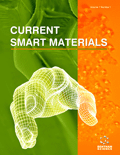Abstract
Background: Polysaccharide based gastro-retentive drug delivery systems (GRDDSs) can retain in the gastric fluid of stomach for a longer time and release the entrapped drug in a controlled and localized manner, which can ensure optimal drug concentration at the site of action with improved bioavailability and reduced side effects of acid-suppressive drugs like ranitidine.
Objective: The objective of the present study was to design smart polymers for gastro-retentive drug delivery of ranitidine through ionic-gelation of carboxymethyl cellulose (CMC) and sodium alginate (ALG).
Methods: The optimal reaction conditions for the synthesis of beads were evaluated by varying reaction parameters during synthesis and were obtained as CMC = 1.5% (w/v), ALG = 0.5% (w/v) and CaCl2= 0.1 M with maximum equilibrium swelling ratio (2922.50 ± 0.90)%. The drug loading was carried out by simultaneous and swelling equilibrium methods. Beads were characterized by SEM, PXRD, FTIR, TGA, bead size and swelling studies.
Results: Increase in Ca2+ ions and ALG concentration resulted in a decrease in swelling capacity and an increase in bead size. Beads got collapsed in phosphate buffer solution and swelling occurred through the non-Fickian diffusion mechanism. Floating beads with (51.05 ± 0.25)% entrapment efficiency for the simultaneous drug loading method exhibited the Fickian diffusion mechanism and best fitted in the Higuchi model. The diffusion coefficient and initial rate of drug release in simulated gastric fluid demonstrated swelling controlled gastro-retentive release of ranitidine.
Conclusion: These smart polymeric beads have the potential to use as a promising candidate for the design of GRDDSs for the treatment of gastric ulceration and gastro-oesophageal reflux disease.
Keywords: Fickian diffusion, floating beads, ranitidine, smart polymers, stomach specific drug delivery, GRDDSs.
Graphical Abstract
 5
5





